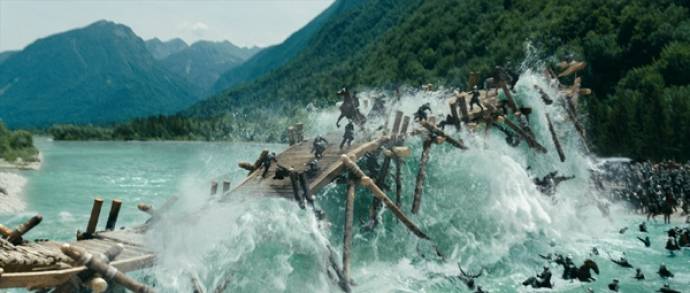STA, 16 April 208 – Mojca Planšak of the Slovenian Film Centre has told the STA that film is contributing to recognisability of locations and increases the interest to visit Slovenia and its destinations.
Slovenia has several attractive destinations in this respect. In the former Yugoslavia, the most films made in Slovenia were shot in the coastal town of Piran and in the valley of the Soča river.
Several foreign films were also shot in Slovenia in the last ten years, the largest of which in terms of budget was The Chronicles of Narnia: Prince Caspian in 2008.
The majority of the film was shot around the Soča, as the producers were looking for natural wonders similar to those in New Zealand, where the first film of the series was shot.
In a bid to attract foreign film makers to Slovenia, the Slovenian Film Centre last year introduced refunds of up to 25% of the total recognised costs of production and post-production made in Slovenia.
Eligible costs include costs for fees, transportation, leasing of scene equipment, and accommodation and food for the production team and actors, with EUR 1m being available every year.
"Last year, producers from the United Kingdom, Ireland, South Korea and Italy shot scenes in Slovenia," said Planšak, adding that more than EUR 600,000 had been used for refunds.
The Slovenian Film Centre presented Slovenia as a destination for film makers at last year's Cannes Film Festival together with the Slovenian Tourist Board (STO) and the Ministry of Culture.
They will organise a similar presentation in Cannes this year, as they believe Slovenia can offer a lot to film makers and should be promoted more.
According to Planšak, Slovenia has many locations which can be eye-pleasing to film viewers, including the Logar Valley, Piran, Lake Bled and the picturesque Predjama Castle.
There are also unique locations in Slovenia like the world-famous Postojna Cave and the Velika Planina plateau, while the Alps or the centre of Ljubljana could also serve as substitute locations, she added.
"Foreign film teams shooting in Slovenia usually come from more developed areas and they expect equal standard in Slovenia," said Planšak, who believes film production technology can meet these demands.
As shooting with drones is becoming increasingly popular, she noted that there were specialised teams in Slovenia which had required permits for that kind of filming.
"It is theoretically possible to shoot almost all locations from the air, under the assumption that traffic on the ground is controlled," she added.
Tourist workers have also recognised Slovenia as a destination for film makers, with its geographical diversity and distinct four seasons being one of its major advantages, said Miša Novak, the head of strategic projects at the STO.
Film makers could potentially be attracted to any part of Slovenia, she said, adding that the country also had a lot of forest, in particular in the areas of Kočevje and Koroška.
The STO is aware that shooting of film scenes brings a risk of overcrowding of certain destinations in short periods of time, but Novak noted that the STO had a strategy for managing and directing tourist flows.







